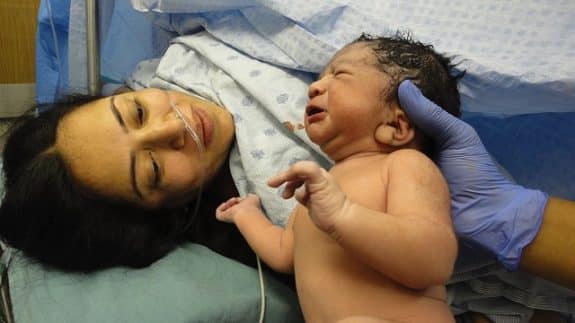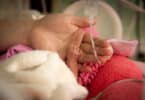Evolution seems like a slow process – one that takes thousands, if not millions of years to significantly change a species. Yet scientists argue this simply is not true. Further, they believe that humans are evolving, creating bigger babies, because of how commonplace Cesarean sections have become. Is it all a bunch of mumbo jumbo, or is there some sort of truth to this theory? Only time will tell for certain, but scientists on either side of the debate have some interesting arguments worth sharing.
Childbirth, in and of itself, is a complex phenomenon. There are so many different varying factors, like the size of the mother’s pelvis, the size of the baby, the health of the mother and baby, and unexpected complications that may create the need for emergency intervention. When all these factors are accounted for, the cold, hard truth is that some babies simply cannot be born vaginally. Yet, according to scientists, the rate of cesarean birth is rising far more than expected. Experts believe an increasing – or evolutionary growth – size in infants could be at least partially responsible.
Of course, there is no real evidence that the rising rate of cesarean births are directly connected to an increase in infant size. In fact, there are many women who opt for a cesarean birth, despite not really needing one. For example, the UK permits mothers to choose the surgical route without a medical reason, as long as their doctor has explained the potential risks to them (some of the most common and potentially problematic include excessive bleeding and infection).
Women are also waiting longer to have children, which could put them and their infants at higher risk of complication during a vaginal birth. Doctors are also seeing more obese mothers, which can increase the risk of certain conditions that may cause complications during childbirth. When paired with the concern of risk, the evidence for evolution weakens a bit. Indeed, the sharp rise in cesarean births may have nothing to do with evolution at all.
Still, there are natural birth advocates who say that the excessive use of cesareans may have even bigger implications outside of a possible increase in the size of infants. Studies suggest that infants born vaginally receive important and beneficial bacteria from the mother’s birth canal that might otherwise be missed during a C-section. There are also concerns over whether or not doctors are medicalizing the birthing process. Yet, in some ways, it may not be a bad thing.
For those infants that are larger – the ones that simply would not fit – and those that may be at risk if a complication arises, they have a much better chance of survival these days. So, even if cesareans are causing an evolutionary change, and even if they do pose some risks to mother and baby, it may not be wise to throw the baby out with the bathwater, so to speak.
In short, C-sections are here to stay – as they should be. Even so, mothers should continue to educate themselves on the pros and cons of both vaginal birth and cesarean birth. Further, they should have an honest and open discussion with their doctor or midwife about any concerns they may have.







